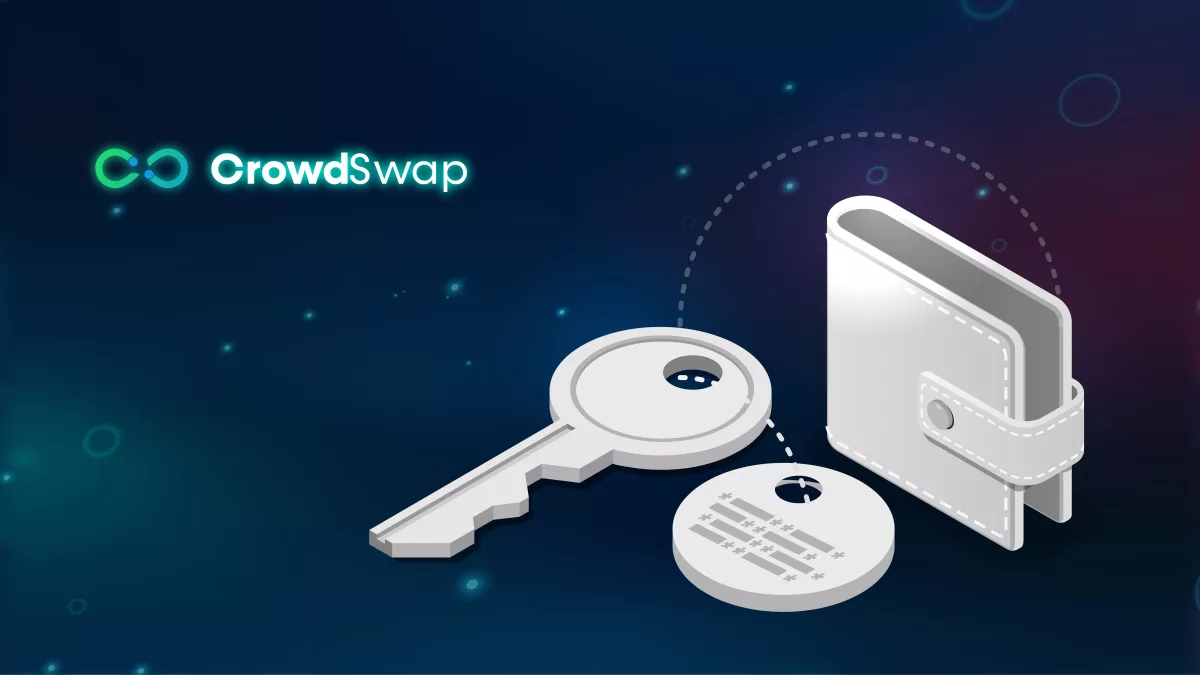There are many sad stories in the history of cryptocurrencies about a person losing their secret phrases or exposing them to scammers. Statistics show that only in 2021, $4 billion worth of cryptocurrencies were stolen. Being decentralized, cryptocurrencies have no central authority that oversees and manages transactions. That’s why the responsibility to take care of one’s crypto assets solely lies with its owner. Therefore, knowing how to keep your funds safe is a must.
As a rule of thumb, adding more layers to your wallet’s security can ensure that your assets are safer. This extra layer of security can be added through various methods: hardware wallets, multisignature wallets, and multi-factor authentication. In this article, we discuss ways of improving the security of your decentralized finance (DeFi) wallet. So without further ado, let’s jump right into it.
Hot Wallet vs. Cold Wallet
Based on connectivity to the internet, there are two main types of DeFi wallets: hot wallet and cold wallet. Hot wallets are typically software or applications installed on computers or mobile phones. They store the private keys in themselves and can be accessed remotely from everywhere in the world. On the other hand, cold wallets store private keys offline. The most common type of cold wallet is hardware wallets like Trezor, KeepKey, and Ledger. Whether you opt for a cold or hot wallet, you need to be aware of the characteristics of each to make an informed decision.
Hot wallets are more common because of their convenience and cost-effectiveness. There are tons of hot wallets in the form of smartphone applications for users to choose from; and they are free! You can install them on any mobile phone and import your existing DeFi wallet. In addition to the abundance of choices, hot wallets are very convenient to use. When you decide to transfer crypto assets, the receiver will see them in their wallet in a matter of seconds.
On the other hand, cold wallets are slower but more secure. In addition, you have to buy one at a minimum cost of around $50. Hardware wallets are USB devices connected to the computer, giving access to your funds. Without the device, you cannot withdraw any coins or tokens from your wallet. Hence, another layer of security is added to your wallet, which makes it impossible for hackers to steal your crypto.
We are not going to say that you have to prefer one DeFi wallet over the other, but hot and cold wallets are used for different purposes. The convenience of hot wallets makes them useful for crypto market traders and those who conduct transactions on a daily basis or even multiple times a day. Conversely, cold wallets are recommended for long-term holders and larger amounts because of their multi-level security.
Multi-Signature Technology
Hannah and Clay have a safe where they store their valuable assets. But this safe is not typical; it needs two keys to open. Each person has their own key, and both have to use their keys simultaneously to open the safe. Can you imagine how much more secure this safe is compared to ordinary safes? This is the premise multisignature wallets technology is built upon.
Multisignature wallets technology is not a new concept, but it has recently gained attention in the world of cryptocurrency. The multisig wallet technology was first used for Bitcoin addresses in 2012, after which the idea of multisig wallets was raised. Currently, there are a lot of multisignature wallets that offer a high level of security. But how do these wallets work?
Using the multisig technology, you add another layer of security to your wallet. Multisig wallets require two or more co-owners to sign a document. This means that when you want to conduct a transaction, it needs to be approved by all the signatories. The most significant advantage of this kind of wallet is that if one of the wallets is hacked, it still needs the other wallet’s approval to transfer funds.
It is interesting to know how a multisig wallet works in action. When creating a multisig DeFi wallet, you determine two or more wallets as co-owners of its assets. The wallet would require their signature to approve the transaction. When the first person initiates a transaction, they are actually ‘proposing’ it. Then it would need to wait for the others to join, review the transaction details, and confirm. This is why these types of DeFi wallets are becoming more popular, especially for shared businesses.
However, multisig wallets are not free of problems. In case one of the signatories gets out of touch for any reason, retrieving funds can be hard. There is an example that happened with OKEx exchange in 2020, leading to the suspension of withdrawals. Read more about the problem here.
Multi-Factor Authentication
Activating Multi-Factor Authentication (MFA) is another necessary measure to increase the security of your wallet. Multi-factor authentication creates multi-layered security for your account. By activating the MFA, in addition to the password, it is necessary to use other authentication methods as well. Authentication can be done via SMS or the Authenticator application.
Biometrics is another way of adding another layer to authentication. Recently, wallets that have fingerprint scanners are becoming more popular. In this type of wallet, the user has to use their fingerprint to sign the transaction in addition to the passwords and combinations.
Master Crypto with Confidence
CrowdSwap's decentralized exchange offers all the DeFi tools you need, with top-notch support at your fingertips
Conclusion
Crypto wallets being hacked is a serious issue because transactions on the blockchain are irreversible. Since the blockchain network is decentralized and no central authority oversees it, there is no mechanism to distinguish between stolen and legitimate currency transactions. Because reverting transactions on the blockchain is impossible, protecting assets and transactions through preventative measures is essential.
In this article, we talked about the pros and cons of different types of wallets, and that cold wallets enjoy a higher level of security. In addition, some security measures you can take to ensure that your funds are safe. We said that by adding extra layers of security like MFA and multi-signature wallets, you can make it harder for hackers and scammers to steal your assets. Stay safe.













